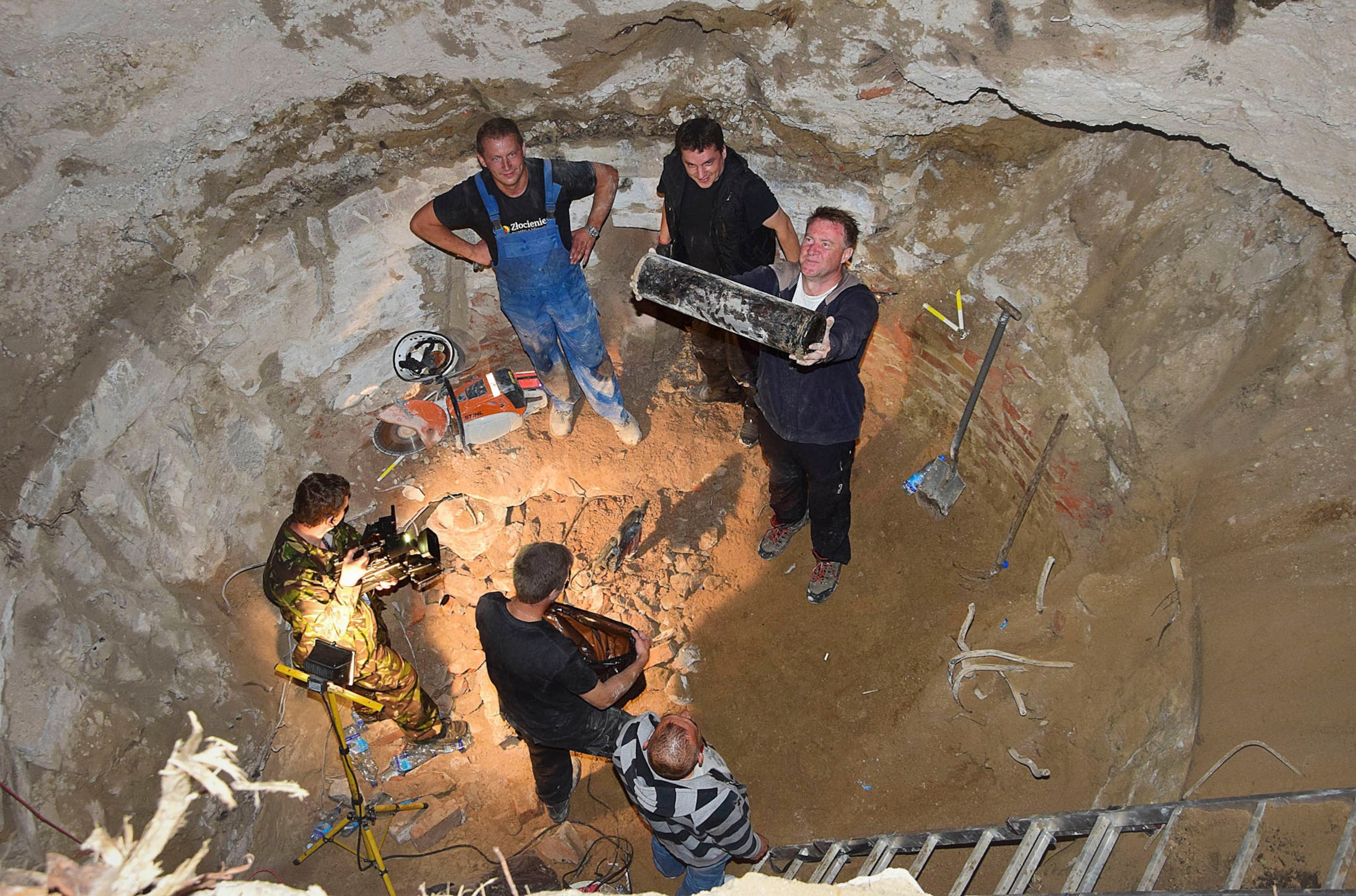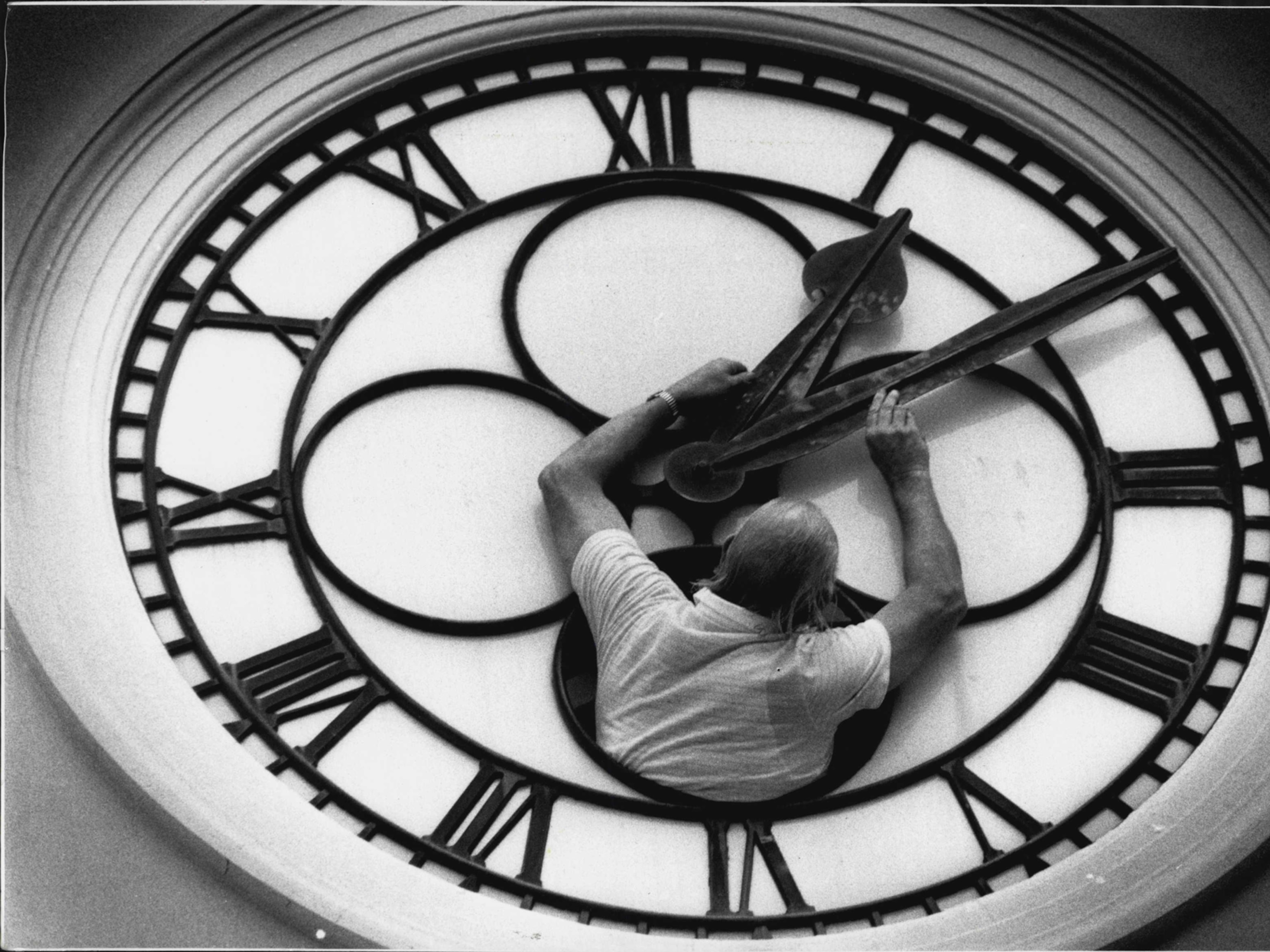
What Can We Learn From a Nazi Time Capsule?
Archaeologists recently dug up a long-buried capsule underneath a former Nazi training facility.
A time capsule buried in Hitler’s Germany was unearthed recently in modern-day Poland. The capsule hadn’t moved in 82 years, but the world above had changed dramatically.
In 1934, the capsule, a copper cylinder, was buried with a formal ceremony in the foundation of one of the buildings of a training center the Nazis were constructing to indoctrinate future leaders of the Third Reich.
After World War II, some European national borders shifted. Falkenburg, the town the capsule was buried in, was renamed Złocieniec and found itself in northwestern Poland. The training complex, named Krossinsee, survived the war and is currently being used by the Polish army.
Since the capsule was buried in the building’s foundation, it stayed inaccessible. But on September 6, archaeologists—excavating some 20 feet down through thick concrete, wading through standing water, and skirting land mines left by the Nazis—finally extracted the capsule. They opened it a week later.
Sealed With Fanfare, Opened With Disappointment
The results were disappointing. Local historians had learned that the 1934 cylinder might contain a documentary of the town commemorating its 600th anniversary in celebrations held a year earlier. But the container held no film. Instead, among other items, there were coins, newspapers, photos of Hitler and other officials, documents such as a parchment scroll authorizing the training center, and two copies of Hitler’s Mein Kampf.
Disappointment is the all-too-common outcome when time capsules are opened. Newspapers, books, and official documents can offer insight into days gone by, but such materials can usually also be found in libraries and archives. Coins and medallions can have some historical significance, but they’re usually not terribly revealing.
Time capsules can serve as a powerful means for generations to communicate directly across a span of many years. But as it turns out, the people who create and seal time capsules often misunderstand their intended audience. The capsule creators may want to commemorate a special occasion, such as the founding of that Nazi training center, while their descendants are more likely to appreciate glimpses of what daily life and popular culture were like in earlier times.
When the Westinghouse Company was planning a 5,000-year time capsule to be dedicated at the 1939 New York World’s Fair, one adviser laughed, “Who in 5,000 years’ time will care about Howard Hughes or college football or fashion shows or Donald Duck or women’s hats or cigarettes or textiles or fountain pens?” But such seemingly ordinary topics and artifacts turn out to be more compelling than committee rosters, mayors’ proclamations, and the like. And simple, unadorned written messages, addressed to recipients yet unborn, are usually prized above all.

Beating the Time Capsule Odds
By surviving to be retrieved and opened with its contents intact, the cylinder in Poland beat the odds for time capsules. Many are sealed and never found. Corona, California, for example, has managed to create, seal, and then lose track of 17 town time capsules.
Still more fall victim to the elements. A copper box containing commemorative items was placed in the cornerstone of the Empire State Building when it was dedicated in 1930. About 50 years later, the box was retrieved for an anniversary celebration. Water had seeped in over time and ruined the contents.
What makes the Poland time capsule particularly unusual is the dramatic disconnect between those who buried it and those who retrieved it. Capsules can serve to link often distant generations. Ancestors and descendants customarily view each other over the intervening years with great interest and affection. But in this case, it is hardly with affection that the Poles who opened the copper cylinder view the Nazis who buried it. When the cylinder contents were first photographed for release to the public, the two copies of Mein Kampf had to be displayed face down, since anything that might be viewed as promoting Nazism is unlawful in Poland.
The items retrieved from the cylinder will go into a museum exhibit, but with commentary underscoring the responsibility of Nazi ideology for tens of millions of deaths, including some six million in Poland, half of them Jews.
What's in a Name?
The Złocieniec cylinder may be described as a time capsule today, but that wouldn’t have been what its creators called it. G. Edward Pendray, a Westinghouse public relations executive, coined the term for his company’s sealed vessel at the 1939 World’s Fair.
Other names over the years have included “safe,” “box,” even “casket.” One of the largest collections, sealed at Atlanta’s Oglethorpe University and not due to be opened until the year 8113, is known as the Crypt of Civilization.
“Time capsule” wasn’t Pendray’s original idea. Considering the Westinghouse container’s sleek, torpedo-like shape, he was going to call it the “time bomb.”
Lester Reingold, a freelance writer based in the Washington, D.C., area, reports on topics in aerospace, history, and theater. His interest in time capsules began when he covered the dedication of a NASA time capsule.





